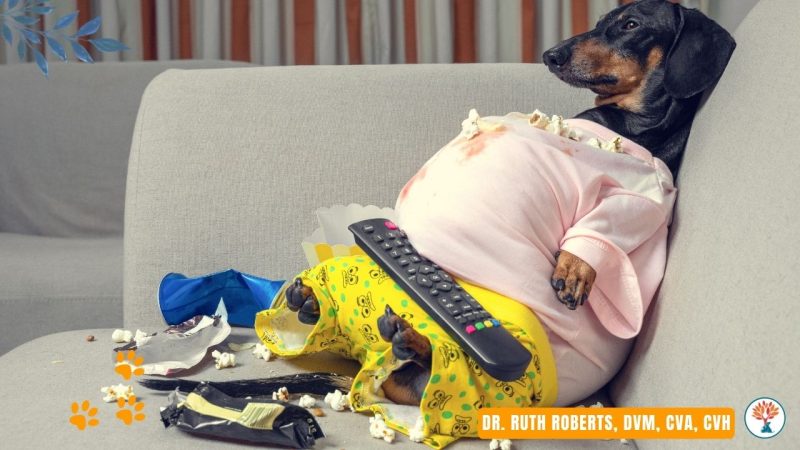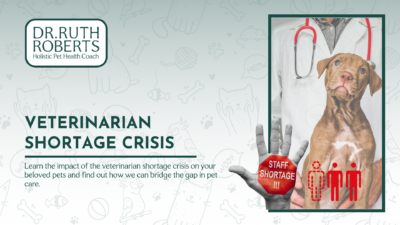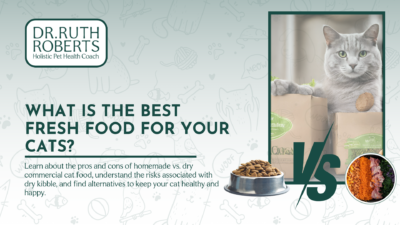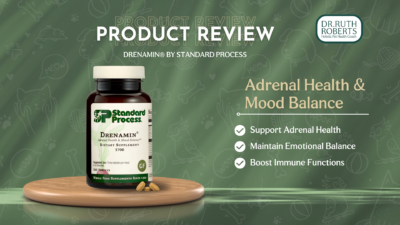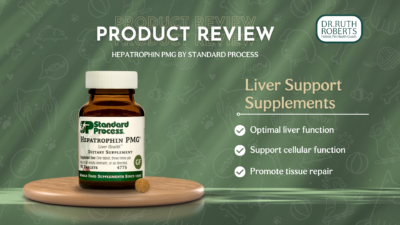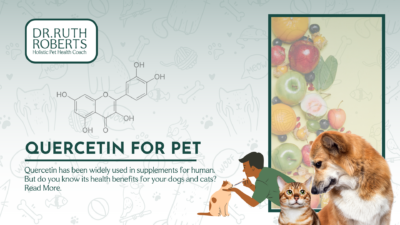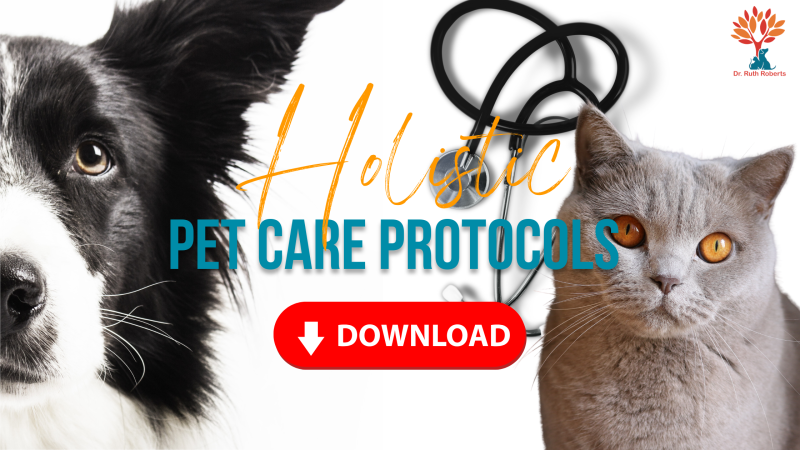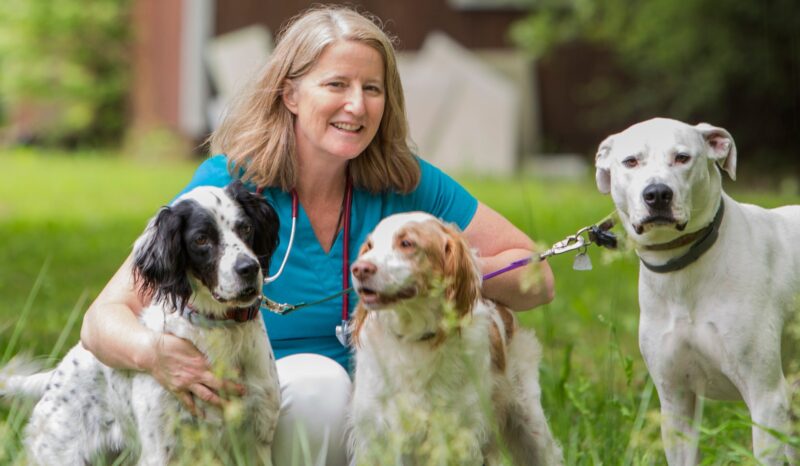Is My Pet Obese?
We’re concerned about our pets being overweight. And because many of you actually have pets that you exercise with, that you’ve been controlling their diets very carefully or you’re actually more concerned about them losing too much weight and too much muscle. So to answer your question, Is My Pet Obese?
I’m going to show the conventional way to do it with the body condition scoring systems and the muscle condition scoring system and the down and dirty, easy way to do it.

First up is the body condition scoring system, and this is the World Small Animal Veterinary Associations global committee. It’s a scale of one to nine. Some veterinarians use the pills score which is on a scale of one to five, but this is what I got accustomed to.
We want to think about two things here. This is a scale of one to nine, but we have five pictures. So that means four to five is ideal. And I would say to you that four and a half to four really is what’s ideal. So we should be able to see a nice tuck in the waist from above. We should get the idea, especially for these last few ribs that they are there. And from the side, we should see a little tuck up as well.
And with your hands over the top of the ribs in this area especially, you should be able to take this much pressure, so pretty gentle pressure and feel ribs underneath. So I want you to get used to really palpating or feeling your pet so that you know what things are to like now, and then you can kind of compare things later. And I think this is especially important as our pets reach midlife.
So say five years of age, so that’s roughly 40 and that’s when things can begin to go sideways if we’re not managing our nutrition and our activity and supplementation correctly for humans; same thing for dogs and cats. So there is the body condition score and that’s used.
Okay, is my pet pet thin? Is my pet fat? Are we good? Is My Pet Obese?
Muscle condition scoring.

So this is a pamphlet put out by, again, the World Small Animal Veterinary Association about muscle condition scoring. And so, you know that here’s the technical way to do it. You’re going to look, you’re going to feel the spine that the shoulder blades are scapula. This dog actually looks pretty thin on muscle to me. Sort of in all of these pictures and then the wings of the Iilya over the hips.
The Hypaxial muscles on the sides so meaning kind of coming down the spine or you first tend to notice muscle loss. You’re gonna have a fat dog with a score of nine with normal muscle mass, but you can also have a fat dog and a body scale or a body condition score of nine with severe muscle loss.
And that’s why it’s important to make these distinctions because how we’re going to treat those two animals is very, very different. The fat dog, that’s young with a ton of muscle, We’re going to match his ass into the older dog that is obese with minimal muscle. We’re going to be very very cautious and make sure that we are doing things that will help build muscle at the same time, help him lose weight.
So we don’t get things going on, like severe arthritis, pain, that’s limiting his movement and that may be why there’s muscle mass.
So there’s two things you’re going to palpate all of this stuff. You want to feel the difference between the skin, the fat, the muscle, and then the underlying bone. So again, you know, in the thin dog, normal Bulleit dog, this fat layer is going to be about like this. In a dog that is obese, you may see a fat layer that’s more like this. And then you’ve got skin over the top of it, and then you’ve got the muscle down here and conversely, you can have a dog that’s obese that has a fat layer like this with skin over the top of it and really not very much muscle and this is the critical distinction to make. Now here’s the deal.
That takes a little bit of getting used to, and I’ve had pet owners routinely say: I don’t know if my dog is too thin or too fat. I can’t tell. And so I’m going to give you the quick and down and dirty way to do this. And that is this. So I told you I was going to explain this picture with the funny bars on it a little bit more.

Body Condition Score
- Waist circumference in front of rear leg
- Chest circumference behind elbow
- Circumference of rear leg
- Circumference of biceps muscles
This is going to dial it down to a number for you to keep track of. So one is you’re going to take a soft tape measure, like a seamstress would use because it’s nice and flexible, it won’t hurt. I have seen people do this with stainless steel tape measures, not a great idea on a squiggling pet. I don’t get the idea why.
So the first, right in front of that rear leg, you’re going to take the tape measure all the way around. And write down how many inches or centimeters that is. The second measurement, same thing right behind the elbow and you’re, and I’m just giving you these landmarks so that you can use this for consistency sake, right behind the elbow.
You’re going to take that tape measure all the way around so you can get the circumference of your pet’s chest in inches or centimeters, whatever makes sense to you. And then number three is around. The muscles, the thickest part of the muscles of the rear leg. And again, you’re going to use this groin fold as your marker.
So, you know, and it’s still approximate but you’re going to be in the right ballpark and you’re going to have some idea what’s going on. And then same thing here, under the armpit and the leg, you’re going to go all the way around the biceps. And I’m sorry, this goes up into the chest a wee bit, but you’re going to take that tape measure around the front of the leg and the armpits, sort of pushing it up gently. See, you’re always in the same place and take that measurement.
Now, that’s going to give you a ballpark idea of the circumference of the bicep muscle. Now, why is this important? Again, if you’re not good with your fingers and it’s like, “oh yeah, this is all muscle right here.
And actually I’m really happy that it actually is. And it’s not so fat anymore.” If you can’t feel the difference between what’s skin, what’s fat underneath it and then what’s muscle underneath that, this is a way for you to keep an idea of what’s happening with your pets as he, or she gets older. And if you find “whoa, man, you know, he’s looking really thin in the rear end,” and you take the measurement and you’re like, “holy golly! He’s lost three inches of the circumference of that rear muscle, what’s going on?” That tells you two things.
(1) he’s losing muscle
(2) there’s something going on to cause that muscle loss.
That’s when you go to the vet and you say, “doc, he’s lost three inches of his rear leg muscle circumference. What’s going on?” And then the doc goes “Yeah. Yes. Wow. How about that? Oh my God. His leg, his hip hurts.” or, “oh my God. His low back hurts.” And then you can take some action to relieve your pet’s pain and also start doing things that will help improve keeping muscle on board.
Learn how to keep your dog or cat’s body weight lean and normal by giving a fully balanced diet.
I’m Dr Ruth Roberts, your pets ally.
Watch Youtube Video here: https://youtu.be/H0QG7bF8VTU

